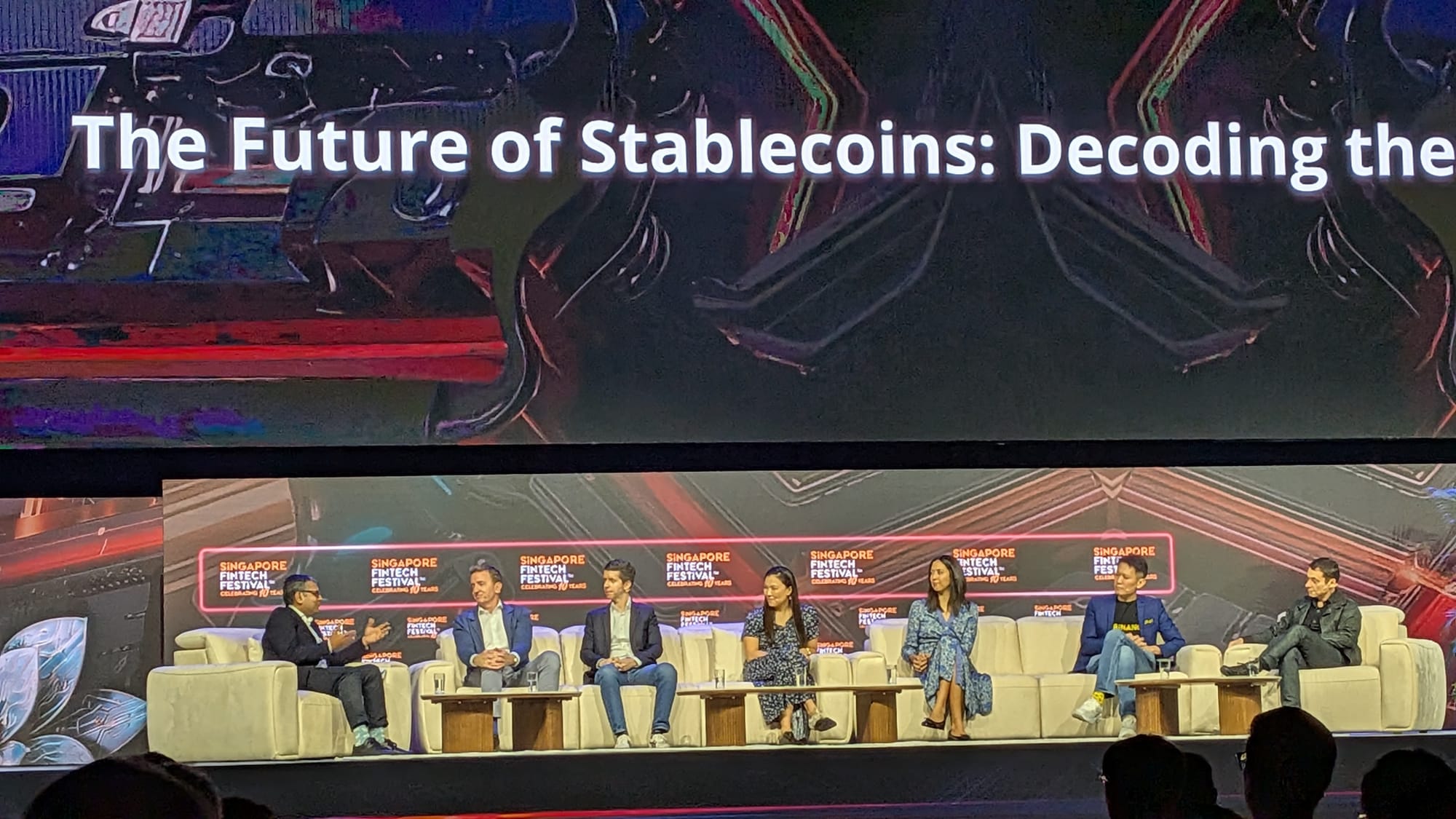The Great Unbundling: How Stablecoins Could Reshape Banking's Core Business Model



Beneath the optimism about stablecoins at this week's Singapore Fintech Festival, a more provocative debate emerged: Are we headed toward an unintentional dismantling of fractional banking itself?
The question surfaced on Day 2 of Singapore Fintech Festival at the main stange during a panel discussion on the future of stablecoins and the GENIUS Act, when Temasek's Pradyumna Agrawal pushed speakers beyond typical adoption forecasts to confront a systemic tension. If payment flows migrate to stablecoins and tokenized assets, what happens to the deposit base that enables banks to create credit?
"You take money out of [deposits] and put that into stablecoins, the multiplier effect gets lost," warned Takis Georgakopoulos, COO of Technology & Merchant Solutions at Fiserv and former JP Morgan executive. "So then you will need to think of a different world in which that whole equation gets unbundled."
It's a scenario that goes beyond market structure changes to touch monetary policy itself. The money sitting in Tether or Circle accounts doesn't fuel small business loans. It doesn't support the credit creation that underpins economic growth.
Different Risk, Not Systemic Risk
Binance CEO Richard Teng pushed back on the doomsday scenario, noting that stablecoin regulations typically require full reserves held at banks. "For most of the stablecoins, if you look at the provisions, they have to be held, probably in a bank. It has to be fully redeemable, so there are enough safeguards to make sure that the credit creation role of banks stays there," he said.
But Teng acknowledged a different threat: yield compression and structural disruption. "I do see changes in market structure, the type of players," he said, pointing to e-commerce platforms issuing their own stablecoins to reduce merchant capital requirements and "drastically" lower fee structures.
The panel revealed a generational divide in how this plays out. "If you're thinking about people in their teens and twenties now, their future world might not be going through the traditional financial institutions," Teng noted. "What they need is the wallet infrastructure. They can get their salaries paid in stablecoins. From there, they can do deployment 24/7 across different asset classes."
The Blended Future, Or Wishful Thinking?
Solana Foundation president Lily Liu offered the most diplomatic path forward: a "blended future" where traditional and decentralized finance coexist. "The best customer experiences would be ones that make it really seamless to move from a traditional network, a traditional bank account, to an on-chain environment," she said.
But even Liu's optimism contained a warning: "The losers will be those who have their head in the sand, whether it's a traditional bank or in the world of crypto and DeFi."
Ripple's Monica Long pointed to her company's recent acquisition of GTreasury as evidence of how this transition might actually work. Serving Fortune 500 companies, the treasury management platform can now offer "blockchain-based infrastructure under the hood" for cross-border payments, then expand into yield-bearing tokenized funds.
The Adoption Reality Check
Georgakopoulos injected a dose of skepticism about timeline, drawing on his JP Morgan experience pioneering JPM Coin. "It's been now several years since we started, and yes, a lot of progress, but if you look at actual adoption and actual volumes, it's still in the realm of a rounding error compared to fiat money movement," he said.
For large multinationals with embedded treasury systems built over decades, the switching costs remain enormous. "For a big company to go and change their treasury system to take advantage of 24/7 at scale to run real-time liquidity on a blockchain, they will need to go and dismantle all of that and start from scratch."
Yet the panel consensus suggests this may be precisely the point. Disruption doesn't require converting the Fortune 500 overnight. It requires capturing the next generation of economic participants — the ones who never opened a bank account in the first place.
As Teng noted, in regions with low financial inclusion, "they have skipped that, and that's not their notion anymore. Their notion is a wallet at this point in time."
The question isn't whether stablecoins will coexist with traditional banking. It's whether that coexistence happens on banks' terms — or whether the unbundling has already begun.
Elsewhere
Blockhead is a media partner for Consensus Hong Kong 2026. Readers can save 20% on tickets using exclusive code BLOCKDESK at this link .

The Great Unbundling: How Stablecoins Could Reshape Banking's Core Business Model
A high-powered panel at Singapore Fintech Festival reveals the friction point that will define digit...

Whales Accumulate as Crypto Range Narrows Amid Macro Tailwinds
Your daily access to the back room....

Circle Reports 66% Revenue Growth in Q3 as USDC Circulation Surges Past $73B
Stablecoin issuer posts $214 million net income as reserve income climbs on dollar-pegged token adop...

